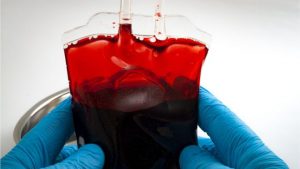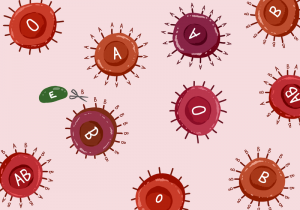Long quest of the universal blood type
The idea of an ultimate universal blood type have dragged many intrigued life scientists into decades-long search for a routine productive type-O conversion. Now UBC’s Prof. Withers says his Lab made a leap towards the clinical use of universal blood group.

(Getty images; BBC )
So what is a blood type?
Since the discovery of quadruple blood types A,B, AB and O, medical scientists and a bit later immunologists have shared a long trail of hopeless struggle with the blood transfusion challenges. Recipient’s intense and potentially life-threatening immune responses are triggered by administering the incompatible blood types. The basic distinction among these blood types is the so called chemical molecules, so called markers, on the surface of the red blood cells; type-O red blood cells, however, completely lack these markers and thus could be safely transfused regardless of recipients’ blood types. In the case of type-O, the recipient’s immune system will not respond because it detects no markers on donor’s red blood cells.

(Kristine Ho;ubyssey website)
Pioneers of universal blood type
Back in 80’s, scientists took the initiative to remove those signatures from A, B and AB red blood cells, using a few enzymes, and turn these types into type-O to make it available to everyone in need particularly in emergency scenarios where there is a critically limited time to characterize patient’s blood type. The biggest obstacle, though, was impracticality and inefficacy of use of then-candidate enzyme. Besides, there was no technique for mass production of the key enzyme at the time.
And … the leap of faith!
UBC Withers’s Lab recently gained promising results by manipulating a number of common signature-removing enzymes that made the invented enzymes more robust and efficient than original ones. The new enzymes are found in a gut bacterium and was easily modified in this bug. The newly found enzymes have shown a significant competency in removing the red blood cell signatures. The last barrier to overcome is to enable this enzyme to cut out remaining forms of signatures in A and B red blood cells. Everything worked out in the laboratory, yet Withers group now looks into potential side effects and safety facets of their achievement.
by: Jamaledin Adel
